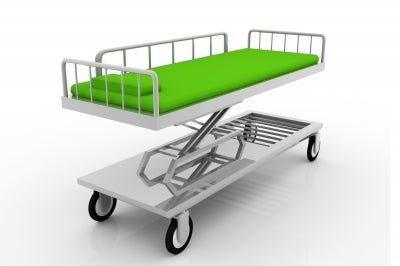Boros: Medicare penalties create 'spillover' impact on all hospital readmissions

Hospital administrators — and the public — now have a more complete picture on Massachusetts hospital readmissions, after the state Center for Health Information and Analysis (CHIA) last week released the first report showing readmissions rates for all insurance payers.
Until last week, comprehensive data was only available on readmissions of Medicare patients through the Centers for Medicare and Medicaid (CMS).
Readmissions of commercially insured patients and Medicaid patients haven’t been compiled and analyzed the same way prior to CHIA’s report, titled Hospital-Wide Adult All-Payer Readmissions in Massachusetts, which measured readmissions for all diagnoses, except obstetric and primary psychiatric diagnoses, within 30 days of discharge.
“It’s the first time that we’re able to look across the state and also look at all the readmissions that happen — not just (within) the Medicare population,” said Aron Boros, CHIA’s executive director..
The work CMS has done to measure readmissions for common diagnoses that frequently lead to readmission may be responsible for some of the reductions Bay State hospitals have made in overall readmission rates, according to Boros. Hospitals are charged with reducing Medicare readmissions to avoid financial penalties from CMS, and that had led administrators to implement policies that drive down readmissions within 30 days.
“There’s a spillover of work that’s being done to prevent CMS readmissions to avoid Medicare penalties,” Boros said.
The data from CHIA shows that the majority of the state’s hospitals saw readmissions decline between 2011 and 2013, coinciding with the start of Medicare readmissions penalties in 2011. Only of handful of hospitals saw readmissions increase during that period, including Heywood Hospital in Gardner (up 3.9 percent), HealthAlliance Hospital in Leominster (up 6.4 percent) and Marlborough Hospital (up 7.6 percent), in Central Massachusetts. It’s worth noting, however, that the data lags by a year because of the time it takes to compile and analyze the data. Boros said CHIA hopes to provide more current figures (just one year old) in future reports.
Harrington slashes readmissions by nearly 20 percent
Meanwhile, a number of area hospitals have made meaningful reductions in readmissions thanks to initiatives geared toward achieving that goal. The largest reduction in readmissions between 2011 and 2013 occurred at Southbridge-based Harrington HealthCare, the hospital system that serves South Worcester County. Readmissions at Harrington Memorial Hospital dropped 18.6 percent during that time.
Harrington officials weren’t aiming to come out on top in reducing readmissions when it began new programs to cut readmissions, said Tom Hijeck, vice president of Patient Care Services. But they’re happy to see such striking results.
Hijeck said Harrington began to track data on the types of patients, and illnesses, that most frequently led to readmissions before penalties from CMS were implemented, and found that people with heart failure, pneumonia and other respiratory issues who were in fragile health were most likely to be readmitted within 30 days of discharge. So Harrington zeroed in on those patients, and came up with new methods for teaching them about how to take care of themselves once at home.
For example, a pharmacist now meets with patients to go over medication instructions before they leave the hospital. Hospital staff also call patients’ primary care doctors to make followup appointments before they leave the hospital, to reduce the risk that patients won’t seek appropriate follow-up care. And like many hospitals, Hijeck said Harrington clinicians have adopted a “teach-back” method in which patients are asked to reiterate home care instructions to staff to ensure they comprehend them.
Having CHIA as a resource for all-payer readmissions will prove invaluable to hospitals as they continue to chip away at readmissions, according to Kathleen Whyte, clinical project manager in the Quality and Safety department at UMass Memorial Medical Center in Worcester.
Healthy competition?
The region’s largest hospital cut readmissions by 3.4 percent, mainly due to two CMS-funded pilot programs. One rewards physicians who demonstrate effective tracking of patients after they’ve left the hospital. Another employs coaches who follow up with patients after discharge to make sure they stay on top of followup care.
Now, Whyte hopes the CHIA report will provide further motivation to reduce readmissions byproviding hospitals with a look at how they compare with the rest.
“Generating a little competition is great for business,” Whyte said.
Image source: Freedigitalphotos.net













0 Comments